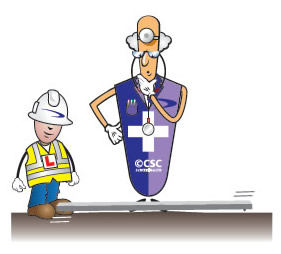
A Practical Guide to Screed Testing: What Do the Experts Say?

A Practical Guide to Screed Testing: What Do the Experts Say?
How Important is the Surface Accuracy of Floor Bases?
Surface Accuracy
 Surface accuracy is defined as the relative difference in elevation over prescribed distances. In simpler terms, it is a measure of the flatness of a surface.
Surface accuracy is defined as the relative difference in elevation over prescribed distances. In simpler terms, it is a measure of the flatness of a surface.
Owing to the nature of flooring materials and the construction processes involved, it is practically impossible to construct floor surfaces that are completely flat (true to datum) – that is, without any deviations in surface flatness or regularity. Small deviations within prescribed limits are however acceptable for different flooring surfaces.
But, deviations higher than that should be avoided as it can impair the serviceability and quality of the floor in several ways. Some of the common impairments caused due to excessive deviation in surface accuracy are:
- Trip hazards to pedestrians
- Excessive sway or wear and tear on wheeled traffic
- Difficulty in installing specialized equipment on the floor
- Ponding in wet areas
- Increased degradation of the flooring due to higher impact at high spots on the floor
As deviations in accuracy of flooring surfaces are inevitable, it is important to focus on keeping the deviations within acceptable limits to avoid direct and indirect impairments to the serviceability of the floor.
Surface Accuracy of the Floor Base
The surface accuracy requirements for floors are not limited to the top layers of the flooring alone. The flatness levels should be considered for all layers of the floor starting from the base substrate.
Different types of screed constructions and floor toppings have different accuracy requirements. But the surface accuracy of the floor base should be compatible with the thickness of the overlaid screed or floor topping to prevent problems of de-bonding or lipping at the joints.
The floor base can be finished to the expected levels of accuracy for general industrial usage by power floating/trowelling or floating/early stage grinding and a combination of normal methods of construction. However higher levels of skilled operation and subsequently higher costs should be expected for industrial floors and floors requiring higher levels of surface accuracy.
Base Preparation for Different Screed/ Floor toppings
Thin floorings such as flow-applied resins
For thin floorings, the surface accuracy required for the base is the same as that for the expected final finish. As the surface accuracy requirements are high, pre-cast concrete units would need higher amount of base preparation to achieve the expected standards.
Poor accuracy can be corrected by mechanical grinding or planing, and low surfaces can be levelled out by using a leveling compound, if approved by the manufacturer of the flooring system.
For most flow applied toppings, grit blasting can provide the expected surface texture and accuracy. However, power trowelling or tamping should be avoided.
Thick floor toppings
For thick toppings, base preparations should be carried out to remove any high spots. However, corrective filling of low spots should be avoided as it can lead to problems such as feather edging (thin, sharp edges that can be easily damaged) and affect the bond with the overlaid screed/topping.
For wider variation in surface accuracy, the remedial measures would depend entirely on individual circumstances.
Partially bonded screeds
For partially bonded screeds, the floor base is given a rough or heavy tamped texture as part of surface preparation, which can produce a laitance on the surface.
Laitance is a weak layer of cement and aggregate fines that is produced on the screed surface due to excessive or improper finishing. It can affect the extent of bonding and even increase the chances of curling and cracking of the screed.
For lighter domestic usage, a satisfactory bond can be achieved by removing the laitance by brushing, followed by dampening down and applying cement slurry before installing the screed. However, for more heavy duty usage, the best alternative would be to avoid a tamped structure and go for floating or early age-grinding.
Fully Bonded screeds
Fully bonded screeds are screeds that require the maximum level of bonding with the substrate. This requires a very high level of surface accuracy for the base compared to other screed constructions.
To achieve the expected level of base accuracy, the base for fully bonded screeds should be prepared by scabbling, gritblasting or planing the surface, followed by vacuum cleaning and soaking. This should be followed with a cement slurry or polymer-modified agent before installing the screed layer.





